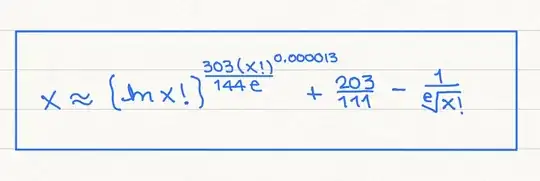I believe you can solve Sterling’s formula for $n$ by way of the Lambert $W$ function, but that just leads to another expression, which can not be directly evaluated with elementary operations. (Although, I wish scientific calculators included the Lambert $W$, at least the principal branch).
I’ve derived a formula which is moderately accurate. If you are rounding to integer values of $n$, it will provide exact results through $170!$, and perhaps further. The spreadsheet app on my iPad will not compute factorials beyond $170!$.
If you are seeking rational solutions for $n$, in other words, trying to calculate values of a sort of inverse Gamma function, it will provide reasonably close approximations for $n$ in $[2, 170]$, and as I remarked above, possibly greater.
My Clumsy Little Equation:

I also have derived a variant which is much more accurate for $n$ in $[2, 40\text{ish}]$, however it starts to diverge beyond that.
I initially derived these approximations for my daughter, who, while working on Taylor/Maclaurin series, wanted a quick way to check for potential factorial simplifications in the denominator of terms.
I couldn’t find any solutions, except the obvious path through Stirling’s formula and the Lambert $W$ function. If more competent mathematicians can find a tweak which can improve accuracy, please share it.
I apologize in advance, as I am new here (as a contributor, that is), and I am not yet allowed to directly embed an image. Hopefully, the linked one works.
